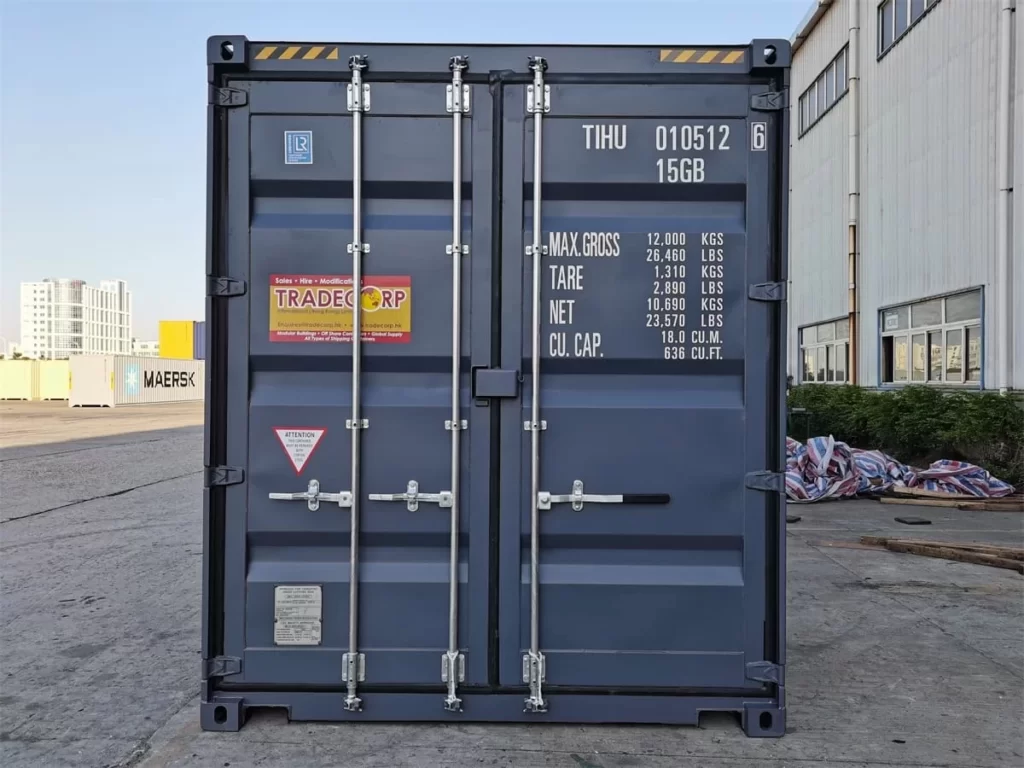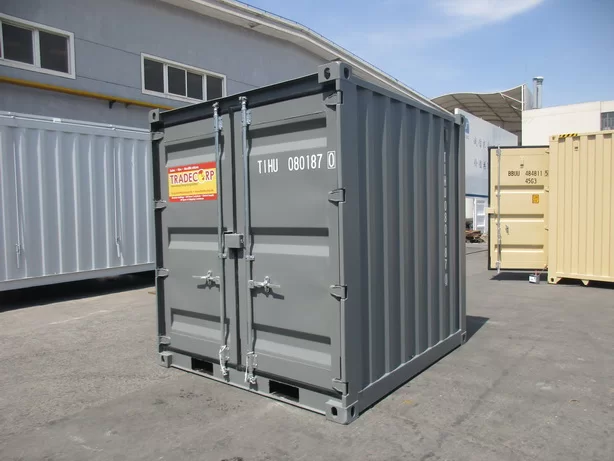Shipping containers that are also often referred to as storage containers are standardized metal containers for storing and transporting cargo. Although they have versatile uses, the specifications of shipping or storage containers like their structure, weight, and dimensions are still unknown to some people. Let’s read through this article to find out the answers.
What are the common specifications of shipping or storage containers?

Corten steel structure
Intermodal shipping or storage containers are designed to withstand harsh weather, and therefore they are made of Corten steel. The Corten steel construction is corrosion resistance steel. Other than corrosion resistance, Corten steel is known for low maintenance and long lifespan.
Corrugated walls
Shipping or storage containers mostly have corrugated walls for a range of reasons. The utmost reason is that the corrugated-wall design allows containers to have structural strength.
What’s more, the corrugation also ensures the equal distribution of the weight of the contents inside the containers. This corrugation design maintains stability when the containers are transported by ships, trains, or trucks.
Cargo Doors and Door Seal
Cargo doors are the doors that are used to access the interior of a shipping or storage container. These doors are typically made of steel and are designed to be strong and secure, able to protect the cargo inside the container. They are typically located at one end of the container and can be opened to allow cargo to be loaded or unloaded.
A door seal is a strip of material that is used to seal the gap between the cargo doors and the door frame. The door seal prevents water, dust, and other debris from entering the container and damaging the cargo. Door seals are typically made of rubber or another flexible material. They are designed to be easily replaceable if they become damaged.
Flooring materials
The most common type of flooring used in shipping or storage containers is plywood, steel, or bamboo. The plywood flooring is durable and able to withstand the weight of heavy cargo, as well as the moisture and changes in temperature that can occur during shipping. Some shipping or storage containers may also have steel flooring, which is more resistant to damage but can be more expensive. In addition to plywood and steel flooring, bamboo flooring is also used by container manufacturers as they want to assemble containers with sustainable resources. The biodegradability, abundance availability, durability, and moisture resistance make bamboo a good choice for flooring.
CSC Plate
A CSC plate, also known as a Container Safety Convention plate, is a safety certification plate that is required for all shipping containers that are going to be used to ship cargo. The CSC plate is a metal plate that is affixed to the left-hand cargo door of the container. A CSC plate contains important information about the container. The CSC plate also indicates that the container has been certified by a recognized authority to be in compliance with international safety standards for shipping containers.
How Big Are Shipping or Storage Containers?
Shipping or storage containers come in a variety of types and sizes. First things first, this article will only explain the common type of containers that are used for shipping or storage solutions, which are standard containers. Furthermore, there are three common sizes of standard containers that are widely used, and they are 20 ft, 40 ft, and 40 ft high cube (HC) containers.
20-foot containers
The 20 ft shipping containers that are 20’ long x 8’ wide x 8’ 6” tall are widely used for storing and shipping cargo. They are the most common size of the standard container type. They are generally used to carry heavy cargo like sugar, plastic ore, paper, and apparel to name a few.
40-foot containers
As suggested by the name, 40-foot shipping containers are 40 ft long. Their length is about twice the length of a 20’ container. In detail, their dimensions are as follows 40’ long x 8’ wide x 8’ 6” tall. The 40’ containers are designed to carry larger capacities but with less weight. Therefore, they are suitable for storing and transporting such commodities as appliances, cotton, furniture, apparel, and electronics.
40-foot HC containers
The 40 ft high-cube (HC) containers have external dimensions of 40’ long x 8’ wide x 9’ 6” tall. Containers of this type have an additional space of one foot or 30.48 centimeters. The extra head space makes these containers great for storing and transporting slightly over-height cargo like furniture or sculptures. Is your business looking for shipping or storage containers for sale? No worries, Tradecorp has got your container needs covered. Fill out the quote, if you would like to find out the container specifications.


